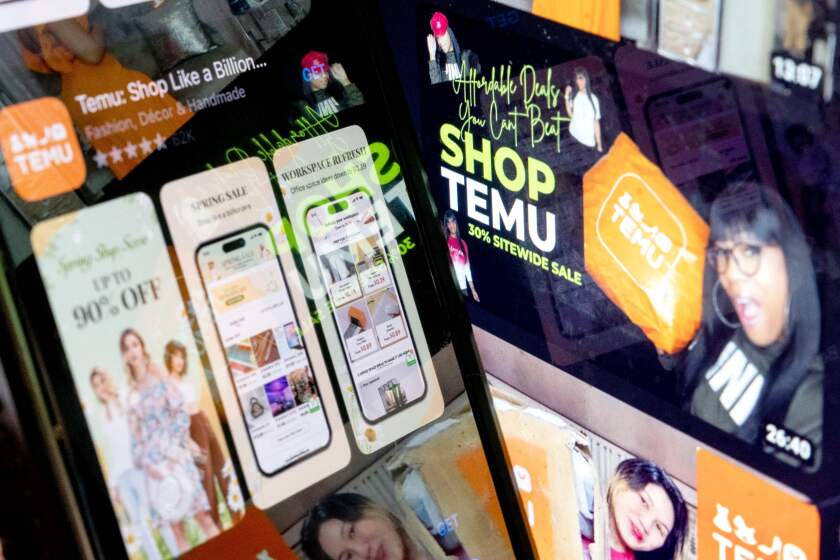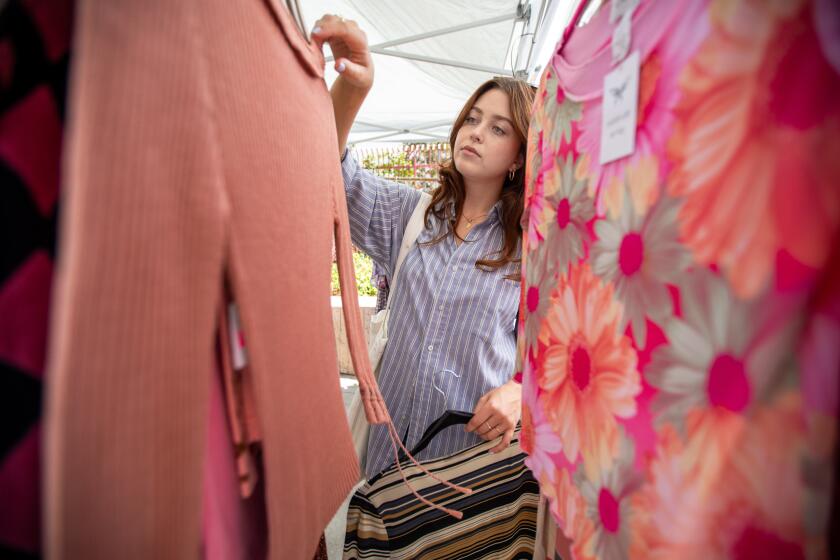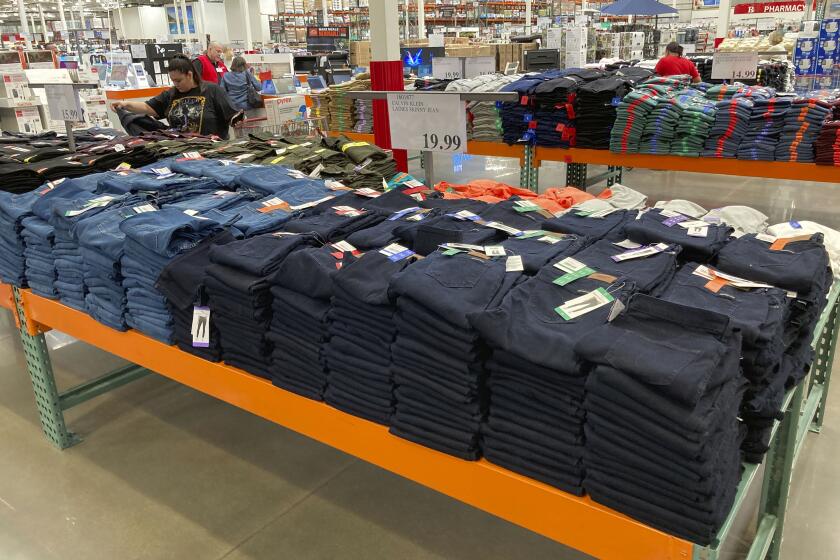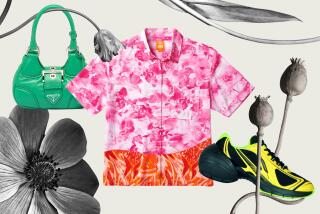Activewear is changing how women dress at work
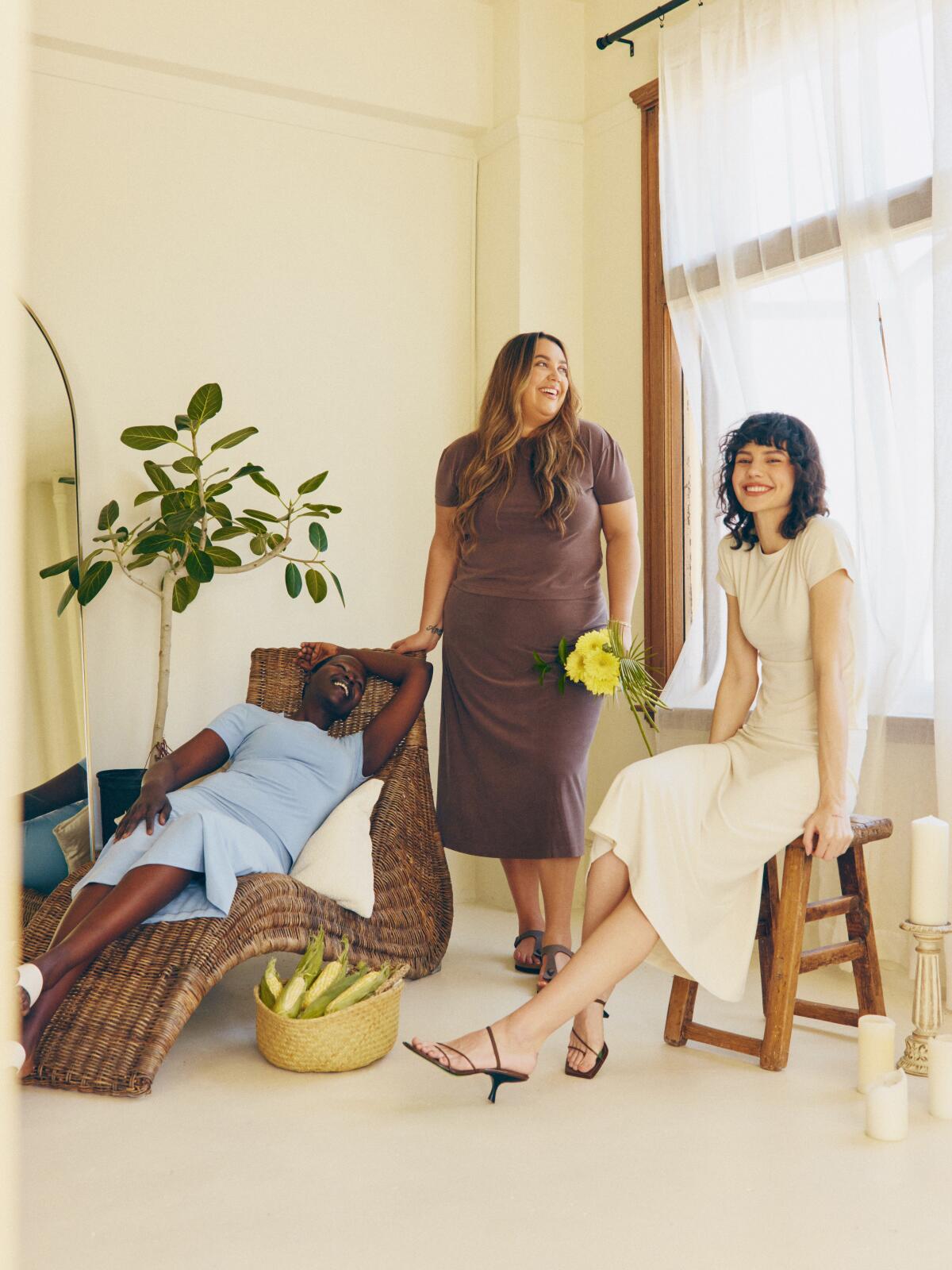
- Share via
If you’re wondering what to wear to the office these days, look no further than the label that also makes your workout gear.
Innovative fabrics are the basis for the “workleisure” trend, which merges a professional look with a relaxed fit to provide a work-from-home feel at the office, according to style experts and trend forecasters. Many workers became accustomed to their comfy attire over the last few years and want to bring that with them back to the office.
TikTok is overflowing with videos appealing to “corporate girlies” in search of high-quality clothing that mean business but wear like pajamas. A clip posted by @theshoppingbestie as she’s picking through a selection of stretchy office pants garnered 4 million views.
Alisha Galvin amassed over 1.8 million views on a video of the nurse styling a pair of Athleta’s $119 Salutation Stash flare pants with a button-down and then a blazer. Commenters were torn on whether the pants belonged in an office or a yoga studio: “Athleta makes work clothes now?” one read.
A similar shift has occurred at Lululemon: The brand’s $148 smooth fit high-rise pants or $198 new venture blazer for men have potential as work basics.
Chinese shopping app Temu is now the most downloaded app in the United States. But it’s raising red flags for lawmakers who are suspicious of Chinese-owned apps that collect reams of American consumer data.
But how have retailers like Lululemon and Athleta, which have historically marketed themselves as athletic apparel brands, so successfully blurred the line between athleisure and office wear?
The secret’s in the sauce — or in this case, the material.
Athleta’s Salutation Stash flare pants, for example, are made with Powervita fabric, a proprietary material that’s breathable and quick-drying. Customers “don’t have to sacrifice comfort when heading into the office,” an Athleta spokesperson said in an email.
Instead of launching a direct assault on the buttoned-up look of office wear, athletic clothing brands are stealthily crossing over into professional attire. Stiff blouses are being redone in nylon, and shoes are being rolled out in a mushroom-based faux leather.
But enhanced comfort isn’t the only thing these fabrics have to offer — they can also be weather-repellent, wrinkle-resistant, lightweight and even sustainable.
“You can get a very high polish, very sophisticated look, yet there’s now an element of comfort introduced that never existed before,” said Jessica Cadmus, wardrobe stylist at Wardrobe Whisperer and founder of Rogue Paq Accessories.
Any stigma of buying fashion secondhand is gone. Shoppers are running mini resale businesses as the investment value of certain luxury brands has soared.
Technical fabrics can also be a means of regaining control of the office environment as the decision to work remotely becomes increasingly out of employees’ hands, Cadmus said. A material that corrects for the temperature, such as Uniqlo’s $39.90 breezy rayon blouse or Patagonia’s $119 polyester corporate vests, functions in place of adjusting the living room thermostat.
“We’re going to start to see more and more fabrics that keep the body cool,” said Sofia Martinelli, senior strategist at trend forecaster WGSN. “It’s definitely one of the fronts of innovation right now.”
Beyond comfort and control, some consumers are craving fabrics that stand up for their values even when they’re seated behind a desk.
That’s why Karen Lee, co-founder of Lezé the Label, an eco-conscious workwear brand, utilizes fabrics made from two nontraditional materials: fishing nets and corn. The challenge was that “the softer the fabric, the more pajama-y it looks,” said Lee, making it hard to land on a blend that was simultaneously soft to the touch yet also structured.
Versatility, Lee said, is also nonnegotiable for today’s consumer.
“There is almost an expectation or standard that clothes should be multifunctional and serve different occasions if people are going to invest,” she said. The hashtag #capsulewardrobe, which refers to a collection of clothing limited to only interchangeable basics that complement one another, has about 1.4 billion views on TikTok.
Shoppers are looking beyond just the price tag of a skirt or a pair of pants in the wake of still stubbornly high inflation.
Companies are also turning to fabrics that are eco-friendly or offer technological benefits.
Major fashion brands such as Stella McCartney and Adidas have used an alternative fabric called mylo, which is made of mycelium, a network of fungal threads that present and feel approximately like animal leather. A pair of $178 wide-leg pants from Eileen Fisher look like pure cotton but are made from hemp, which takes half as much water to cultivate, making it the more sustainable option.
Jessica Ramirez, senior research analyst at retail and brand investment research firm Jane Hali & Associates, predicts that smart fabrics, materials with digital capabilities, are the next frontier designers will push into the workplace.
For now, she thinks the workleisure movement is still lagging in one category: dresses.
“If you make a dress from an activewear fabric, it still looks like activewear,” she said.
More to Read
Inside the business of entertainment
The Wide Shot brings you news, analysis and insights on everything from streaming wars to production — and what it all means for the future.
You may occasionally receive promotional content from the Los Angeles Times.
